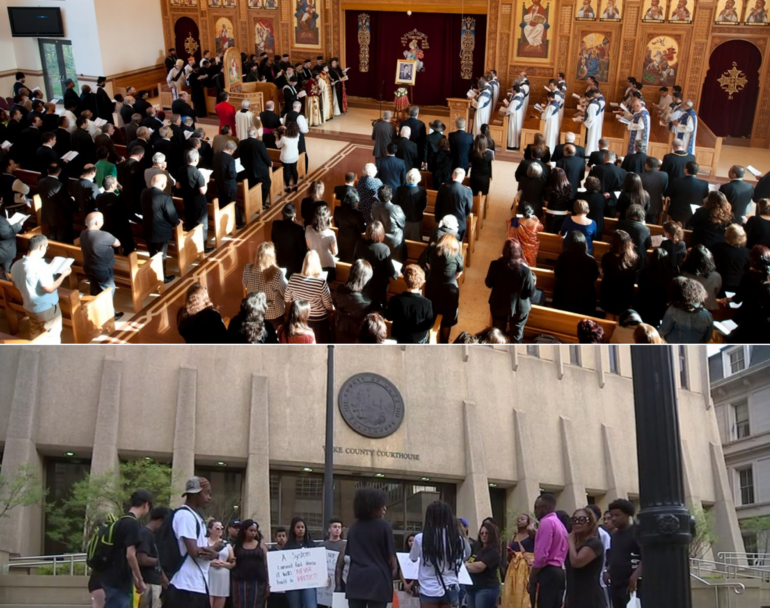
Constitutionally, Religious Gatherings Must Enjoy the Same Rights As Protest Gatherings
By Walter Olson
Ten days can be a long time in constitutional law. On May 29 a closely divided U.S. Supreme Court, with Chief Justice John Roberts joining the four more liberal Justices, refused to order California to lift its restrictions, meant to curb transmission of the novel coronavirus, on church services that have more than 100 attendees or fill more than 25 percent of building capacity. I wrote about that ruling last Tuesday, noting that the question for both Roberts and dissenting Justice Brett Kavanaugh was whether California had discriminated against worship services with respect to comparable secular gatherings. Roberts declined to find such discrimination, observing that California’s rules had cracked down across the board on activities in which “large groups of people gather in close proximity for extended periods of time.”
Today, that case very possibly—probably?—would come out differently, because, over the past week, California, like other states, has allowed public assembly in crowds of far more than 100 persons to protest the death of George Floyd in police custody.
Whether or not making an exception for the protests was the right thing to do, it has crucial legal implications, as attorney Anthony Sanders points out in a new piece for the Institute for Justice. Under the Court’s free‐speech jurisprudence, to allow assembly for the purpose of expressing one kind of message but not another is a content‐based restriction on speech of the sort that nearly always fails constitutional review. It triggers strict scrutiny as to whether the restriction is the least intrusive possible and has been narrowly tailored to advance a compelling government interest.
Religious liberty jurisprudence points the same way. While the prevailing standard on whether the government is required to offer affirmative accommodation of religious exercise may have shifted over the years, it has been clear all along that strict scrutiny will apply if the government discriminates against such exercise.
One element of public health regulation that might withstand strict scrutiny is the distinction between indoor and outdoor meetings since the novel coronavirus appears to transmit much more readily indoors than outdoors. But the implication is that religious and other assemblies should at least be free to go forward if they take place in the out of doors. And current state rules have by no means conceded such a liberty. For example, it is not uncommon for states to ban a 20‐person family graveside memorial at which all participants wear masks and refrain from hugging, chanting, or singing.
We can now expect courts to begin striking down some of these rules if states do not revoke them first. The same goes for other time‐place‐and‐manner restrictions on assembly, speech, and movement: if a state declines to enforce an announced curfew on those who stay out to protest, it may face strict scrutiny trying to enforce that curfew on persons who have stayed out for a worship service.
Whether a state has officially endorsed a double standard, of the sort some have explicitly urged, isn’t the main issue. Courts will examine the degree to which they have formally or not waived the rules, and it won’t help when governors, mayors, and other officials have signaled approval or even encouraged people to attend protests. Maybe a state might wriggle out of a suit by arguing that it had merely invoked its prosecutorial discretion to suspend enforcement against an assembly it could not have stopped anyway. But courts may look askance at the might‐makes‐right theory that numbers and will can gain rights for persons marching in a popular cause that are denied to persons who wish to march in a less popular one.
The virus itself, as scientists have tried to warn us, does not distinguish between the righteous and the unrighteous. Though rare, outdoor transmission does appear to happen, and a 100,000-person protest in Spain is suspected (along with soccer events) of having helped fuel that nation’s worst‐in‐Europe outbreak.
When it comes to regulating the time, place, and manner of speech or of religious exercise, the courts may defer to rules based on an objective standard of public health and impartially enforced. But as for rules which merely serve to impose one group’s values and arbitrary will on others—well, those are what the courts are there to stop.